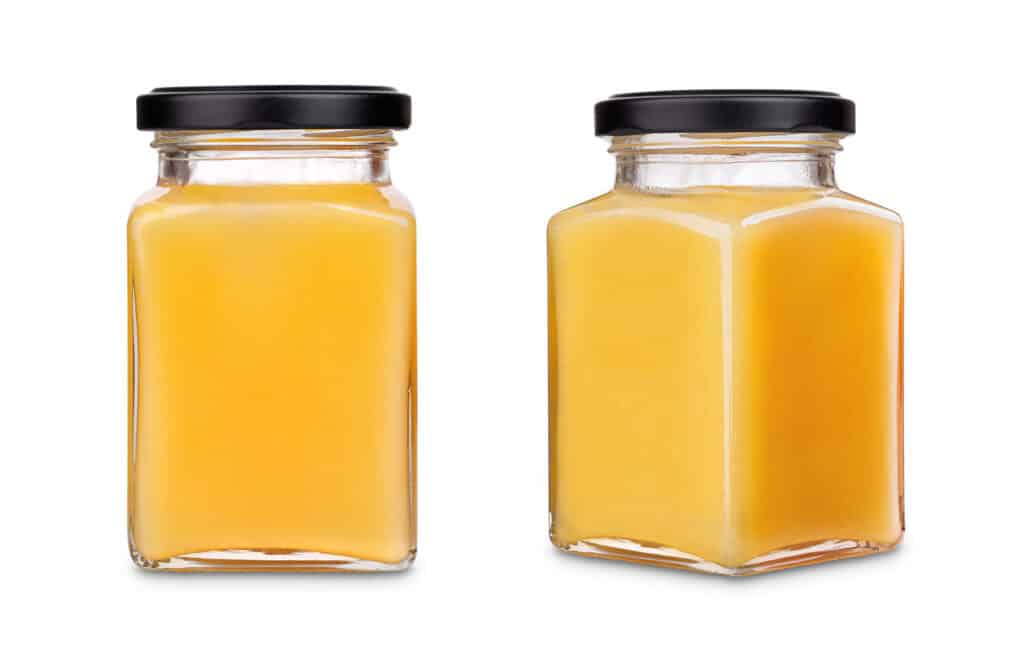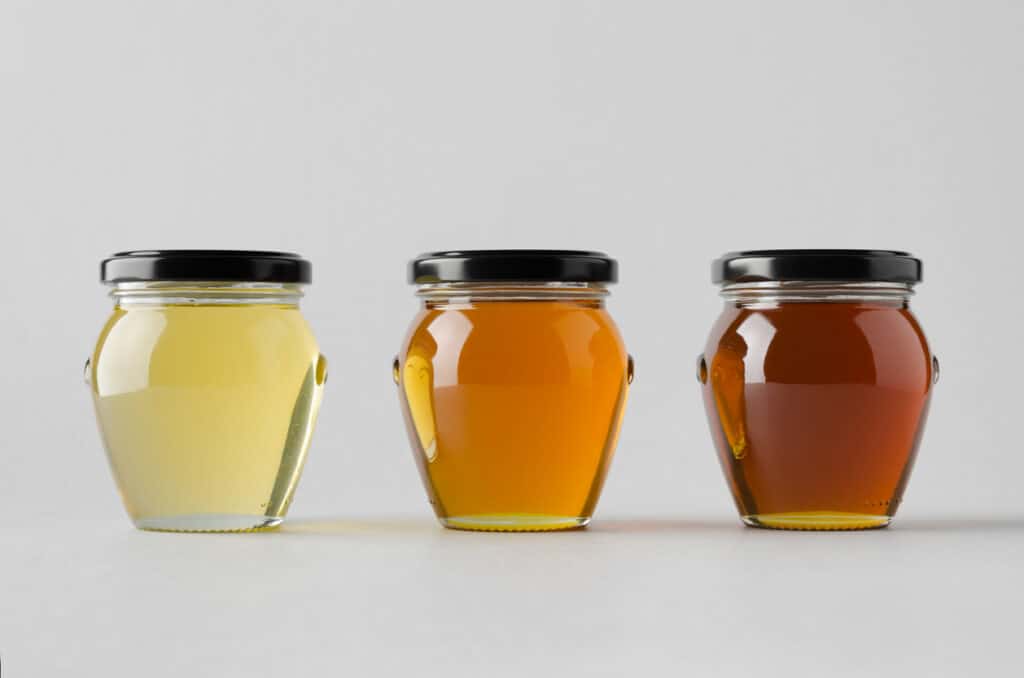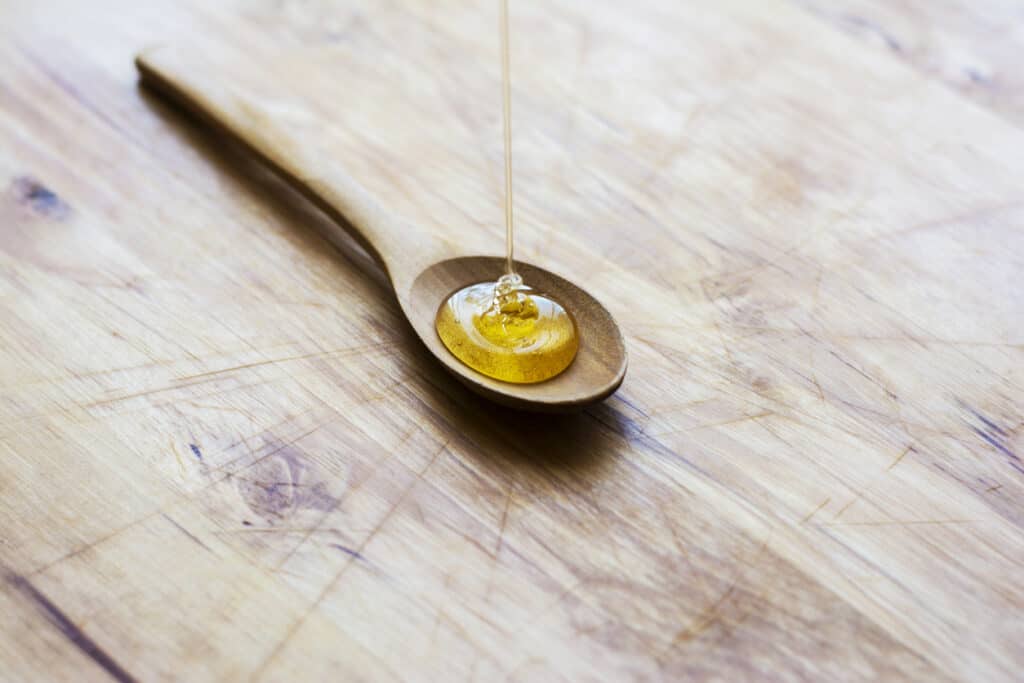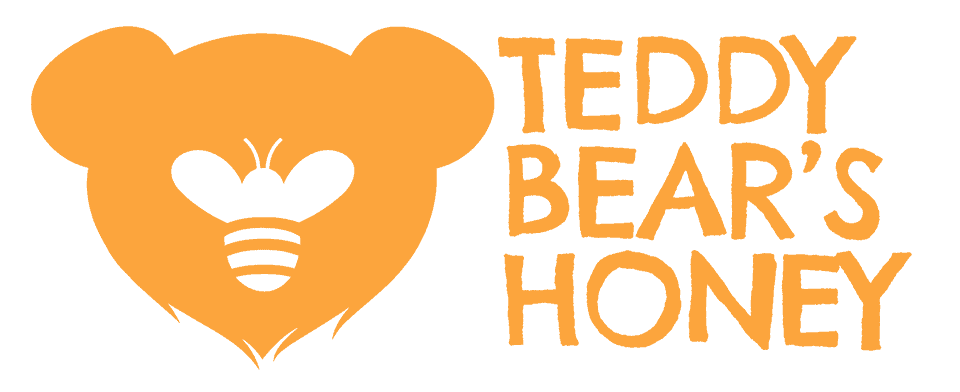A blanket of yellow nodding blooms starts to pop up in meadows and gardens, or you may find them growing wildly on the roadsides. The genus Solidago, better known as the goldenrod, is a flower that blooms as the last blossoms in fall. Although this plant is often used to make teas and as decorations in food, many people consider it a weed.
Goldenrod honey is produced by bees in the fall seasons from late July to the first killing frost in September. A rich dark amber-colored honey with a strong, pungent smell is often the last nectar bees harvest and need to sustain them through the long cold winter months.
Bees’ sweet relationship with goldenrod plants is vitally important to their hives for the upcoming winter months. Although beekeepers will immediately know when the bees have started pollinating goldenrod plants from the strong, pungent smell of the hives, there are still some benefits to this honey.
Goldenrod Honey

Goldenrods that bloom in the fall are significant late-season pollinator plants for bees. This pollen is their last source of food before the winter months, and it is used to supply late-season nest food. It is also the last harvest of honey for the year taken by beekeepers.
With the right acidic soil conditions and moisture and permitting the weather conditions are suitable for foraging during the fall seasons, bees can make a surplus amount of goldenrod honey, enough for beekeepers to harvest and for the bees to sustain them during winter.
The quality of honey is assessed by varying factors, which is why no honey made from the same plant but in different regions will ever be the same. They are assessed according to their plant origin, climate conditions, soil composition, and how it is processed.
Is Goldenrod Honey A Monofloral Honey?
Monofloral, also known as unifloral honey, comes from collecting the nectar of one specific variety of plants, such as the goldenrod.
Due to its extensive coverage during the fall seasons, it is the predominant nectar collected for the honey’s production that infuses the goldenrod’s taste in the honey and gives it its unique taste.
Although the honey is Monofloral and is collected from goldenrod plants, it does not mean that it does not contain traces of nectar for other blooms available to the bees.
In order for goldenrod honey to be classified as monofloral honey, it needs to contain 50% of the nectar from the goldenrod blossoms.
The advantage of monofloral honey is that it is high in an organic compound called MGO (methylglyoxal), which increases its product’s health benefits and helps prevent biofilms, which is the development of the microbial process.
The benefits of having monofloral honey apart from the plant-specific benefits are,
- It helps ease the inflammation of the stomach lining
- It helps reduce the risk of low blood sugar
- Increase the immune system
- Aids in wound healing
- Induces sleep
- Fights fatigue
Why Do Bees Make Honey From Goldenrod?
As winter approaches, goldenrod plants are a much-needed food source in the fall season. This food source and its nectar are vital for the stimulation of the queen to increase her brood.
If the nectar is plentiful enough and the queen has laid enough eggs, then there is a much higher chance of the hive surviving the winter months, with the increased numbers to help keep the hive warm through the cold season.
The cured honey is capped with wax so that it can be stored for more extended periods without fermenting. Once the bees have used up the uncapped food, they can start to use up their stored reserves.
How To Differentiate Goldenrod Honey From Other Honey?

Bees will start to pollinate the fall goldenrod blooms to sustain them during the cold winter months that they will face. If there has been enough rainfall that year, then the harvest will be plentiful for the bees.
Goldenrod honey can make many inexperienced beekeepers worry over their hives. The production of goldenrod honey is a stinky business. Compared to other honey productions during the year, this is one harvest that makes inexperienced beekeepers think their hives’ harvest is rotten.
Although some beekeepers have described the smell like that of stinky socks, some have remarked it as a distinct spicy smell with tones of licorice.
Store-bought honey is processed kinds of honey that line the shelves at your local supermarket. This honey has been heated and pasteurized to create that liquid syrup people have become used to buying.
Unfortunately, this heating process kills the natural antioxidants and minerals that raw honey contains for all those health benefits.
Store-bought honey has also been processed to have a more liquid consistency for ease of use in squeeze bottles.
It may be easier to squeeze your honey out of a bottle into your tea, but you will definitely be missing out on all the good beneficial health nutrients that raw honey can provide.
For any honey producer to be able to claim their honey raw, it has to have at least a 50% concentration of natural honey.
What Does Goldenrod Honey Look Like?
Goldenrod honey ranges from a dark yellow to a dark rich amber color. Some may even describe the color as maple syrup. The range of color depends on the amount of goldenrod pollen harvested compared to the wildflowers present in the honey.
It is said that when honey gets darker, there are more antioxidants present in the honey, and the better it is for health reasons.
What Does Goldenrod Honey Smell Like?
It tickles the nose with the smell of spicy licorice. The leaves of goldenrod plants, when crushed, give off a very aromatic scent of licorice, so it would make sense that this would be carried over into the honey.
It has a very distinctive and potent smell compared to other sweeter honey collected earlier in the year. Some describe the smell as caramel, butterscotch with a hint of spice, and a burst of licorice.
The smell of goldenrod honey at the start of the harvest is exceptionally potent, as described by some beekeepers. They don’t even have to see what plants are being harvested to tell you the bees are producing goldenrod honey.
As the months’ progress, the smell is said to dissipate and be replaced with the sweet-spicy smell of caramel.
What Does Goldenrod Honey Taste Like?
The taste of goldenrod honey is unlike the sweet caramel taste that you would expect of honey.
It has been said to have a slightly bitter taste with a tang of spiciness.
Although this is not as popular as other kinds of honey on the market, it has a very distinct taste that leads to the point that you either love it or you don’t. This honey is not for everyone, but there are still fans that warrant the increasing production of this nectar.
What Consistency Should Goldenrod Honey Have?

No matter what honey you have, crystallization is a natural process as the cooler months start to take over from summer.
Some honey will crystallize faster than others. This crystallization is due to the ratio of glucose to fructose in honey. Honey is, after all, an unstable sugar solution comprising 70% sugars and 20% water.
Goldenrod honey has a low fructose to glucose ratio causing this honey to crystalize faster.
Although some people think that crystallized honey is honey that has gone bad, it is indeed a sign of purity and quality. As the temperatures drop, honey will naturally crystalize, but this does not mean it is bad.
Glucose sugar is naturally white, so the glucose sugar will separate from the water during the crystallization process while the fructose remains liquid. This crystallization has no adverse effect on the quality of honey at all.
If you prefer a more liquid consistency, just pop your jar into some hot water to liquefy the contents again. NEVER microwave or boil the honey, as this will kill all the good nutrients in the honey.
Why Does Goldenrod Honey Have A Bad Reputation?
Goldenrod plants are, in all fairness, a weed. This invasive plant is native to Northern America but is also grown in Europe as a garden plant. Some see it as a wildflower others see it as an aggressive weed.
This plant has received such a bad reputation because, well, weeds do what weeds do; they take over the world. Often seen as an invasive plant, it quickly spreads and suffocates the local plants of a specific area by reseeding and underground rhizomes.
As much as these plants are needed for bees in the late fall season for the production of honey to sustain them, they are also seen as a pest by many farmers as goldenrods tend to invade livestock grazing pastures and are more challenging to get rid of than they are to settle in for good.
Some of the goldenrod species can be toxic to livestock which is another reason why farmers are anti-goldenrod. However, the Solidago genus is safe for most animals to eat if found in your pastures.
Goldenrod Honey Benefits
It is said that honey takes on the benefits of the plant that the bees harvest and, in doing so, transfers the beneficial qualities the plant possesses to the honey.
With a rise in the number of people looking for more alternative ways to treat ailments and find alternatives to the traditional chemically manufactured medicines, it is no wonder that honey has become a much more popular condiment in the pantry.
Preliminary research done on goldenrod was conducted on test tubes and animal research. With positive results showing that goldenrod can assist with weight control, reduce skin aging, have cancer-fighting properties, and aids with heart health.
Although the results point to these benefits, this has not yet been tested on humans, and goldenrod honey should not be taken as a cure to these ailments.
Goldenrod Honey For Weight Control
Research suggests that goldenrod properties may assist with weight control by regulating the genes that control fat production.
Goldenrod Honey And Cancer
Reports have shown that goldenrod has helped suppress prostate cancer tumors in rat studies.
Goldenrod Honey And Heart Disease
Between two groups of rats, there was a 34% lower level of heart injury in the controlled group of rats using goldenrod as a daily preventative dose.
Anti-Aging And The Benefits Of Goldenrod Honey
Studies have found that goldenrod holds properties of delaying premature skin aging by delaying the accumulation of old, poorly functioning cells.
Creating a facial mask with goldenrod honey will act as a powerful anti-aging regime for your skin. The honey acts as an exfoliator for dead skin. When goldenrod honey is crystalized, it adds that extra buffer for a smooth complexion.
Goldenrod Honey For Allergies
Due to its numbers in the fall season, goldenrod plants tend to be blamed for the hay fever and allergies people suffer. However, the allergies are often caused due to the accompanying plants in the area, such as ragweed and marigold.
Pollen allergy sufferers consume one to two teaspoons of honey a day to help them build up a resistance to allergies caused by pollen. Consuming the raw goldenrod honey helps reduce hay fever as it contains fragments of propolis to build up a resistance in allergy sufferers.
Does Goldenrod Honey Help With Inflammation?
Goldenrod plants are often used to reduce inflammation in joints and help ease the pain of arthritic joints.
In human investigations, it has been discovered that components of goldenrod aid in the efficacy of reducing inflammation in joints and help decrease the level of pain that people suffer from arthritis. This effect is partly due to a potent anti-inflammatory flavonoid antioxidant called quercetin that is found in the goldenrod plant.
Folklore Medicinal Properties Of Goldenrod Honey
Research has been done on the folklore medicinal benefits of goldenrod honey and the uses that specific countries have found beneficial of this nectar.
| Country | Benefits of folklore medicine |
| Germany | Found it had diuretic propertiesAnti-inflammatory effectsCleansed the kidneys and urinary tractsHelped in the prevention of kidney stonesAided in the relief of painful hemorrhoids |
| Czech Republic | Helped treatment of inflammatory conditions of the urinary tractAided in the prevention of kidney and bladder stones |
| Poland | Used as a diureticHelped in the acceleration of wound healingUsed in skincare for younger, softer looking skin |
| Ukraine | Used for its diuretic propertiesSome say that it aided in the treatment of tuberculosis |
| Bulgaria | Used for its diuretic effectsUsed in the aid as an expectorantHelped relieve the painful inflammation symptoms of gout |
| Romania | Used in maintaining healthy urinary tractsAided in the normal functions of the digestive systemUsed externally for the treatment and recovery of wounds and ulcers |
| China | Used for its antibacterial propertiesHelped in respiratory tract infectionsUsed as an anti-inflammatory agentAssisted as a diuretic |
Disadvantages Of Goldenrod Honey
Always bear in mind that everything has positives and negatives, and when dealing with any health issues, it is best, when in doubt, to consult a health care professional.
Since honey takes on the plant’s properties that have been harvested, it is crucial to know that goldenrod has a diuretic property. People on diuretic medication should avoid taking goldenrod honey as this may cause an increase in fluid loss, leaving you dehydrated.
Another reason why consulting with your health care professional is essential is when a fluid restriction is required, such as in congestive heart failure and kidney disease patients.
Patients with high blood pressure need to be vigilant when using goldenrod honey as research shows that there was a decrease in excretion of potassium and sodium, which increases blood pressure in the body.
Pregnant and breastfeeding moms should avoid goldenrod honey as there is very little research done in this field and the effects of goldenrod properties on expecting moms and the transfer of fluid to the baby.
So it is best to avoid using goldenrod honey when you have any of the following conditions,
- If you are allergic to pollen
- Acute forms of stomach ulcers
- Inflammation of the pancreas
- Gallstone disease
- Acute acidity
- Severe gastritis symptoms
- When using prescribed medication for diuretic problems
- During treatment or high blood pressure
- During breastfeeding
Goldenrod Honey For Your Pets
Goldenrod honey is perfectly safe to use on your pets. Like many of the benefits goldenrod honey provide humans, it supplies the same relief to your domesticated animals.
The daily treat of a small spoon of goldenrod honey for your pet can help in the maintenance of controlling specific ailments that affect them, such as;
- Urinary tract infections
- Arthritis
- Joint pain and inflammation
- Treating and healing of wounds
- Antimicrobials as a replacement for using antibiotics
Dosage for animals is recommended as follows;
| Size of your pet | Dosage |
| For small dog breeds | One teaspoon daily |
| For medium dog breeds | Two teaspoons daily |
| For large dog breeds | One tablespoon daily |
| Most cat breeds | ½ teaspoon of honey daily |
As goldenrod honey contains sugar, it is essential to check the health of your pet’s teeth when giving them their daily dose of honey. If your pet is comfortable with you doing so, then it would be recommended to brush their teeth after a dose of honey to prevent any decay of healthy teeth.
Any honey should be avoided in pets that suffer from obesity or weight issues.
Is Goldenrod Honey Vegan?
Due to the way the honey is made, it does not constitute a vegan product. As honey is a food source made from a bee, and a bee is, in fact, a living organism, it goes against the vegan train of thought.
There are also ethical factors that play into the reasons why this is not a vegan-friendly product. Unfortunately, there are some practices that tend to use bees as a production house and are seen as cruel towards the bees.
Some more reasons why vegans consider honey a product that does not fit into the guidelines is;
- Beekeepers of large-scale producers treat hives with antibiotics.
- Due to unfortunate circumstances where hives are infested with disease outbreaks, beekeepers need to eliminate the problem by burning the hives and killing all the bees.
- Studies have shown over an extensive range of samples that 75% of honey is contaminated with certain insecticides.
- The honey that is taken for commercial use is replaced with high fructose corn syrup as the bee’s food source. This practice has been used since the 1970s, but recent studies have proven that this is in part the fault of colony collapse disorder.
- Incorrect labeling and advertising of honey products selling them as pure when it is, in fact, replaced with by-products.
- Unfortunately, harvesting honey from commercial hives leads to injury and death of some of the bees.
- The unscrupulous treatment of the queen bee, in some cases, by clipping her wings to prevent them from relocating the hive.
These are all reasons that play a part in why honey is not considered a vegan product, even though it contains only the products of plants.
Conclusion
This monofloral honey is produced in parts of Northern America, where goldenrod plants grow wildly in most places. This honey, along with its commercial value, is an essential harvest for the bee’s as this is the last food source bees will forage before facing cold, harsh winters.
Although goldenrod honey has been referred to as a pungent smell of gym socks and stinky cheese, its flavors are surprisingly sweet with a spicy tang.
As with many different honey compilations, goldenrod honey has a diverse list of reasons why it is considered a healthy alternative to refined and processed sugars. The health benefits of goldenrod honey consumed over long periods can help with minor ailments such as allergies to more potentially life-threatening diseases such as low blood sugar or cancer tumors. Goldenrod honey is not the cure-all remedy but can offer a holistic approach to the symptoms of some ailments.

